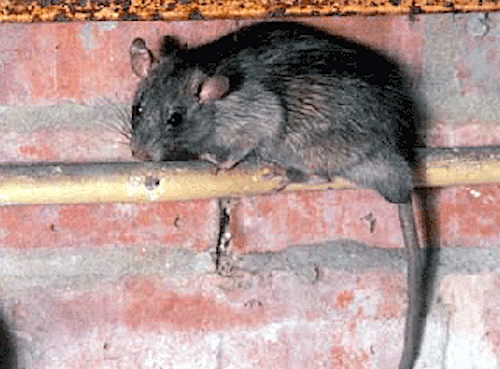
CLEMSON, S.C. — Throughout history people have tried to strike a delicate balance between their needs and those of nature. Rats complicate the issue considerably.
That’s the reason behind the South Carolina SGA Rodenticide Task Force, recently formed by the state Department of Pesticide Regulation (DPR), which seeks to balance the scales between the tenuous hold of wildlife along South Carolina’s fast-developing coast and the human health concerns of the deadly diseases — like plague, hantavirus or rat-bite fever — that rodents spread.
The task force brings together the Department of Natural Resources (DNR), Clemson University science researchers, local officials and the pest control industry. It is charged with researching and creating strategies to address rodent populations on Kiawah Island and the simultaneous loss of several of the island’s famed bobcats, some of whom have shown traces of rat poison in their systems.
“Our goal is to continue to monitor rodent control and the effects of second-generation rodenticides on Kiawah and provide research on the progress being made there,” said Steve Cole, director of Regulatory Services at Clemson, which administers DPR and other state regulatory agencies. “Hard data is essential, so we’re fortunate to have the help of all the parties involved, from local and state government as well as pest control operators, to examine all sides of the issue.”
In the 1950s anticoagulants, which keep blood from clotting, began to be used in rodenticides. A second generation of anticoagulants, called SGAs, were developed in the 1970s and proved faster and more effective. They’ve been used internationally to control rodents ever since.
But when biologists found traces of SGAs in some Kiawah bobcats — which are known to feed on rats — the discovery sparked concern that the chemicals were a danger to the feline predators.
Nine companies handle more than 90 percent of the pest control contracts on Kiawah, according to DPR. Those and other smaller companies already have begun to adopt a type of control known as Integrated Pest Management (IPM), which employs a variety of control methods, many of which don’t involve chemicals at all. An August training for pest control operators held online by Clemson offered an arsenal of IPM techniques for 50 attendees.
“I think we are absolutely headed in the right direction as we consider the wildlife issue on Kiawah,” said Jim Wright, executive director of the South Carolina Pest Control Association (SCPCA). “We’re very appreciative that DPR put together this task force to focus on rodent control in this part of our state. This ensures the unbiased collection of information and the effective communication about rodent control sensitivities with pest management professionals.”
The assistance of DNR wildlife officials and Clemson research scientists such as toxicologist Thomas Rainwater of Clemson’s Baruch Institute of Coastal Ecology and Forest Science in Georgetown is a welcome addition, said Mike Weyman, deputy director of Clemson’s Regulatory Services, who leads DPR.
“This is a multifaceted problem and we need data to address it effectively,” Weyman said. “DNR is now mapping the island and determining where to deploy traps. We are conducting a blind survey of the 74 licensed pest control companies on Kiawah to determine how many SGAs have been used in the past year.”
“SGAs are used because they work. They’re a crucial arrow in the quiver for pest control operators,” he said. “In a restaurant or food storage facility the threshold for a rat is zero. They don’t have a choice. A rat dropping will shut them down. They have to use the best product available. It all comes down to public safety. The important thing now is that the task force collect accurate data and share the facts with all the parties involved so we can reach shared decisions.”
Wildlife may not read the data, but they are among the parties most involved, said Emily Cope, deputy director of Wildlife and Freshwater Fisheries at DNR, whose agency is experienced in dealing with the complex issues that arise with any threat to South Carolina wildlife and their habitats.
“We appreciate the opportunity to further investigate any potential impact of rodenticides upon the wildlife at Kiawah,” Cope said. “We are grateful to have the support of Clemson and Kiawah Island in this project. We all share the same ultimate goals.”
Chief among the goals is the age-old balance of man’s needs with nature’s — ensuring that, as Kiawah Island continues to develop, its visitors and residents can be safe from dangerous pests while the remaining wildlife and its habitat are protected.
“This task force is another step forward to addressing the big picture,” Wright said. “The SCPCA agrees the pest management industry can voluntarily reduce the use of these products. We’re committed to helping resolve the problem and more than willing to be part of the solution.”
END
Get in touch and we will connect you with the author or another expert.
Or email us at news@clemson.edu

